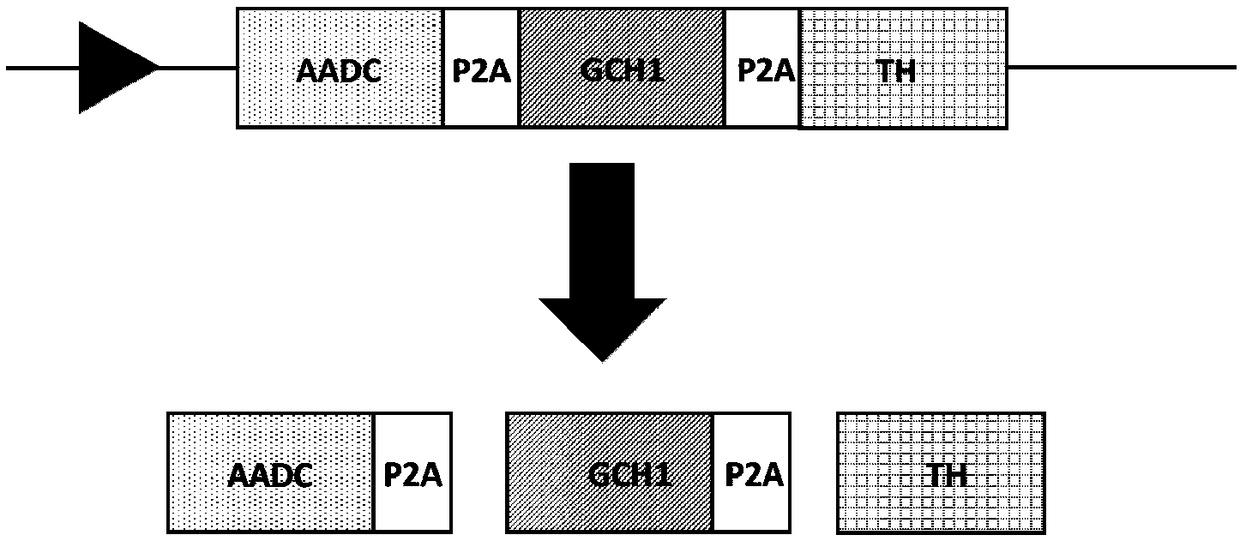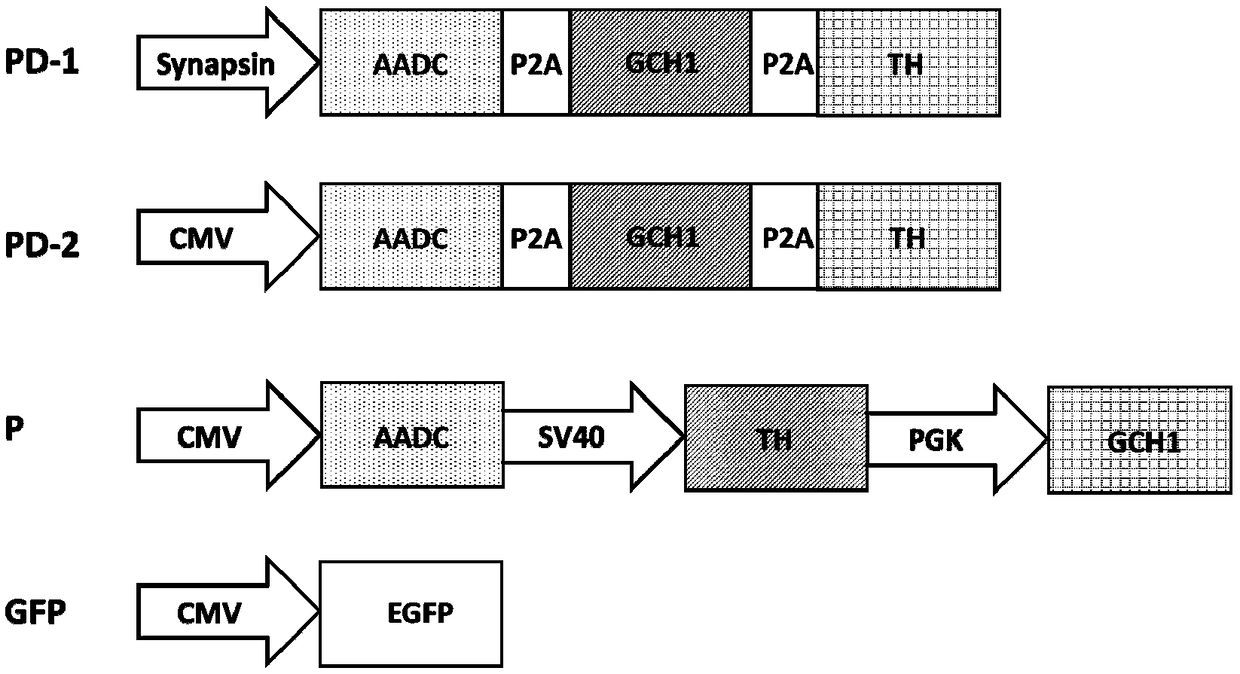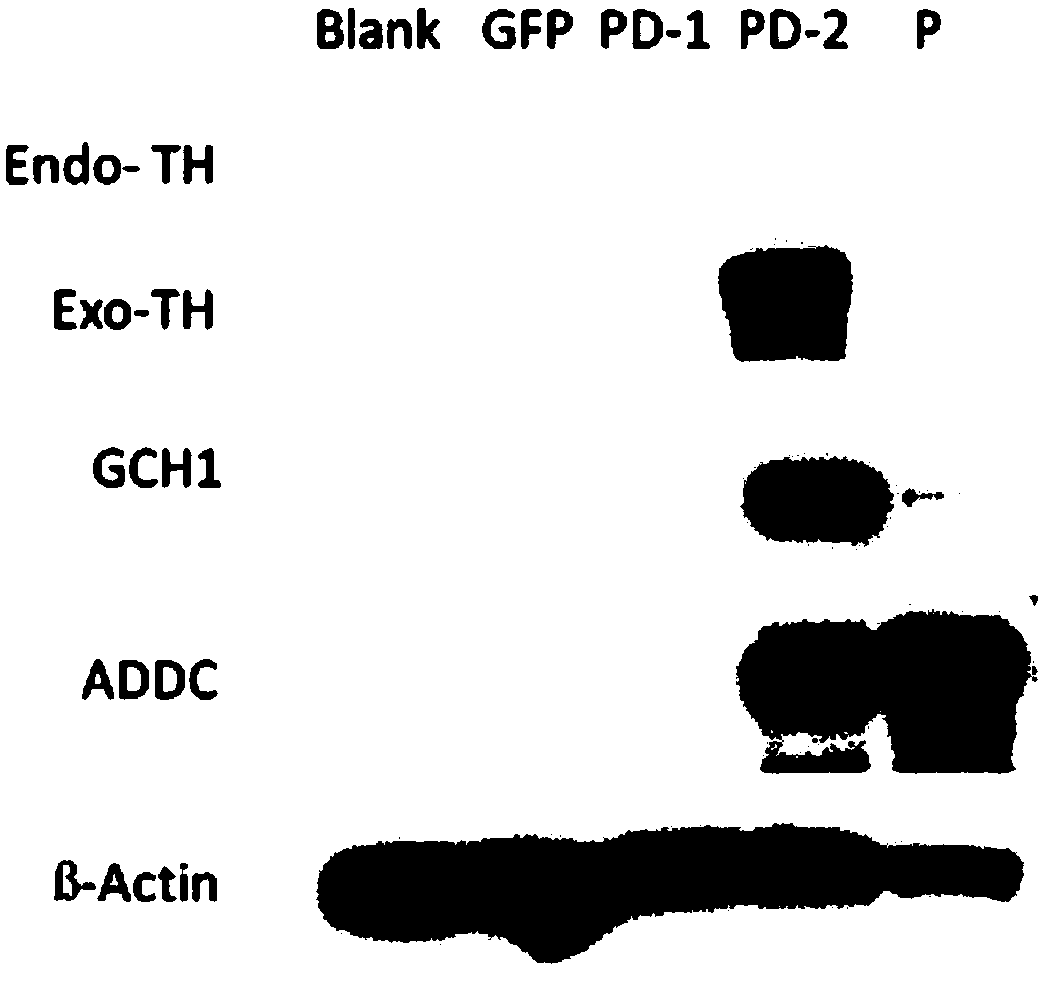Gene sequence construct for treatment of central nervous system diseases
A technology of the central nervous system and gene sequence, which is applied in nervous system diseases, gene therapy, genetic engineering, etc., can solve problems such as expression imbalance, achieve the effect of improving balance and improving treatment effect
- Summary
- Abstract
- Description
- Claims
- Application Information
AI Technical Summary
Problems solved by technology
Method used
Image
Examples
Embodiment
[0050] One, such as figure 2 As shown, the construction of various constructs:
[0051] KL0039 vector, artificially synthesized CMV enhancer-synapsin promoter-AADC-P2A-GCH1-P2A-TH and AADC-SV40 promoter-TH-PGK promoter-GCH1 sequences (wherein TH is a truncated form of TH); wherein, CMV enhancer- The synapsin promoter-AADC-P2A-GCH1-P2A-TH is connected to the pUC57 vector (pUC57-synapsin-AGT); the KL0039 vector here is a lentiviral transfer vector, which is selected from existing lentiviral vectors or modified as needed A partially engineered lentiviral vector.
[0052] 1. PD1 vector construction
[0053] Using the KL0039 vector as a template, Age-F+Sal-R was used to amplify the sequence between WPRE and cPPT, and the PCR product was recovered and purified by electrophoresis. The primer sequences used were Age-F: CTGAGTGCCATTGGATGA caatcaacctctggattaca; Sal-R: gattactattaataactactcacgcatgctcttctcca. At the same time, pUC57-synapsin-AGT plasmid was digested with AgeI and Sal...
PUM
 Login to View More
Login to View More Abstract
Description
Claims
Application Information
 Login to View More
Login to View More - Generate Ideas
- Intellectual Property
- Life Sciences
- Materials
- Tech Scout
- Unparalleled Data Quality
- Higher Quality Content
- 60% Fewer Hallucinations
Browse by: Latest US Patents, China's latest patents, Technical Efficacy Thesaurus, Application Domain, Technology Topic, Popular Technical Reports.
© 2025 PatSnap. All rights reserved.Legal|Privacy policy|Modern Slavery Act Transparency Statement|Sitemap|About US| Contact US: help@patsnap.com



